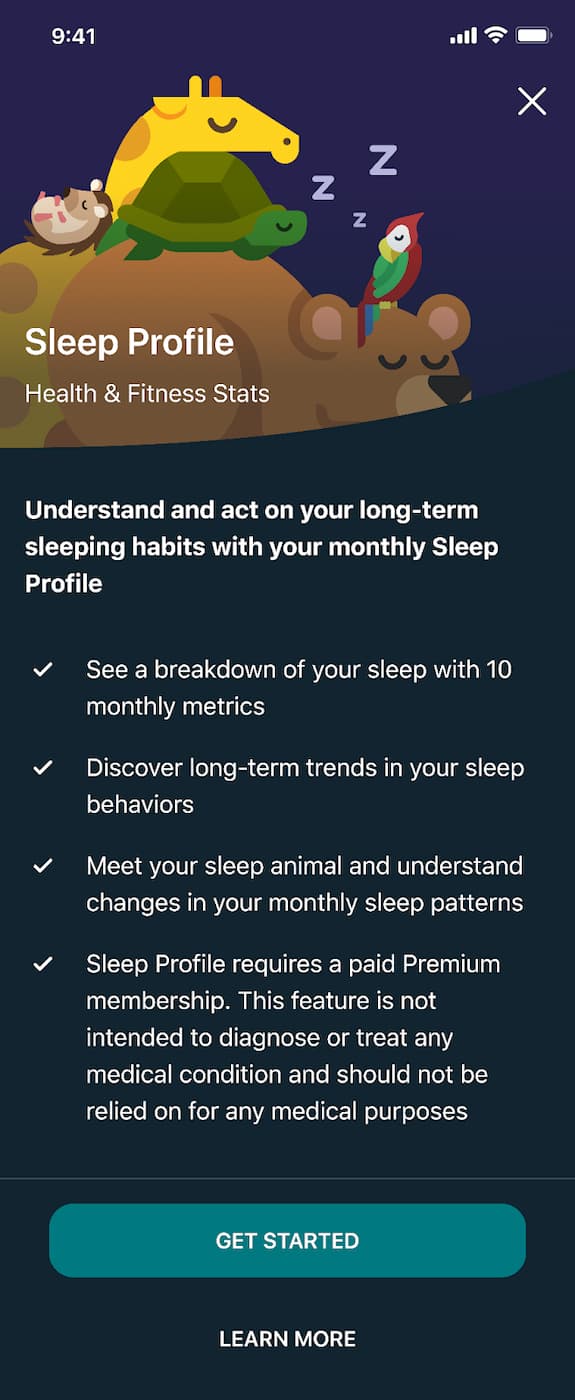
Sleep tracking is one of the best parts of owning a Fitbit, and this week the Google-owned company is doubling down on that feature. Rolling out soon, “Sleep Profiles” will give Fitbit owners more insights on their sleep, and how they might be able to improve it.
Fitbit ‘Sleep Profiles’ will help you understand your rest
Late last year, we reported on Fitbit testing out “Sleep Animals,” a way of categorizing your sleep habits into six groups – Slow to Sleep Tortoise, Restless Sleep Parrot, Shallow Sleep Hedgehog, Short Sleep Giraffe, Segmented Sleep Dolphin, and Solid Sleep Bear.
Now, Fitbit is formally launching this feature as “Sleep Profiles,” using those same six animals to represent the results of Fitbit analyzing your sleep patterns and habits.
To determine how you sleep, Fitbit uses 10 different metrics of measuring the quality of your sleep. This includes new data points such as how consistent your bedtime is, how long it takes for you to achieve “sound sleep,” and how long until sleep is disrupted.
Fitbit explains:
Our research team studied 1,000 different sleep features during its analysis before distilling it down to the key metrics we include in your profile. Ranging from new metrics, including sleep schedule variability, time before sound sleep and disrupted sleep, to previously tracked metrics such as sleep duration, restfulness and REM sleep, these data points portray a holistic month-long view of your sleep patterns and quality.
The company further notes that “ideal ranges” for each of the 10 metrics are provided to users based on their age and gender, and show the user where they fall within that range. Those results are then shown on a monthly aggregate view.
To create your sleep profile, Fitbit needs at least 14 nights of sleep tracking per month, with the profile becoming more precise the more you wear your smartwatch or tracker. Results, including your sleep animal, are shown in the Fitbit app on the first day of every month, and may change from month to month.
Your sleep animal is then used to provide tips on how you might be able to get better sleep.
Based on your sleeper type’s behavior, you will see where your sleep patterns compare to others like you – whether it’s setting a more consistent sleep schedule or creating a bedtime routine like trying the mindfulness content found within the Fitbit app to help you fall asleep faster.

These devices support Fitbit Sleep Profiles
Importantly, Fitbit Sleep Profiles aren’t available to all Fitbit owners.
Firstly, you’ll need to be an active Premium subscriber to get this data, which means paying $9.99/month.
Second, you’ll need a supported Fitbit device. Sleep Profiles will launch with support for the following devices:
- Fitbit Sense
- Fitbit Versa 3
- Fitbit Versa 2
- Fitbit Charge 5
- Fitbit Luxe
- Fitbit Inspire 2
Sleep Profiles start rolling out the “week of July 4,” with data showing up on August 1 for those who meet the requirements.
More on Fitbit:
- Fitbit has over 2 million users already enrolled in its AFib detection feature
- Google Fit is getting a new logo as it endures through Pixel Watch and Fitbit
- Google Assistant can now check your Fitbit and Google Fit stats
FTC: We use income earning auto affiliate links. More.


Comments